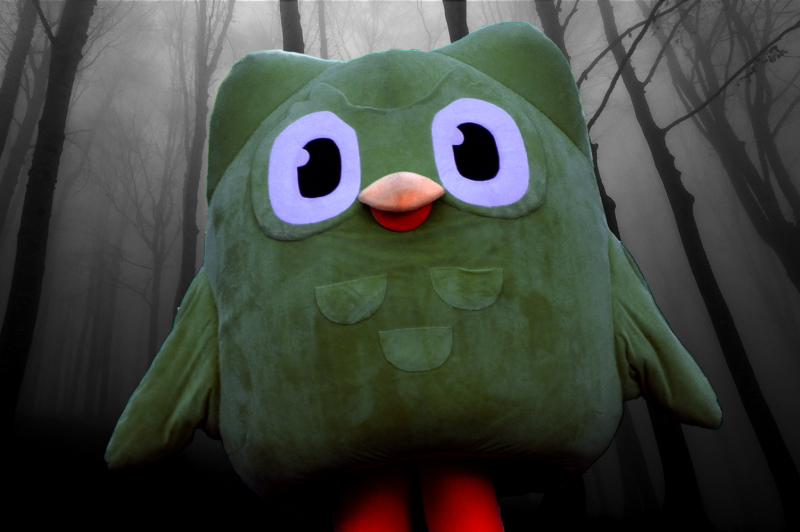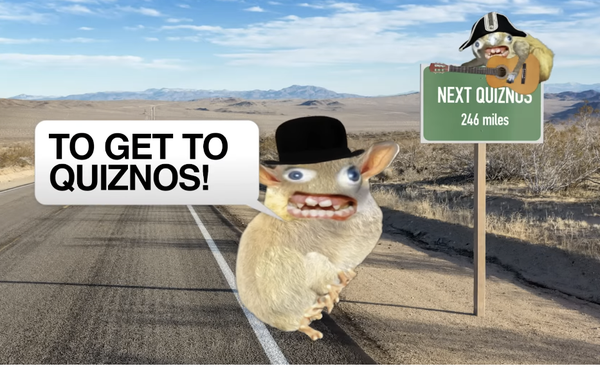
When Mascots Go Rogue
During the Super Bowl, brands unleashed their mascots to engage in fun shenanigans. Old Spice’s Swaggy Spice promoted "Smelf-Confidence," Mr Pringle’s alleged lookalike, Chris Pratt, got into some awkward situations, and M&Ms’ Spokescandies celebrated “almost champions.”
Fun they might be, but they stick closely to all the conventions with their friendly optimism. What would happen if a brand mascot were to deviate from the script?
Cute but Villainous
The prevailing notion is that mascots are meant to be a welcoming representation of the brand. However, there is merit in mascots showing a brand’s quirky and mischievous traits.
Duolingo’s mascot, Duo, serves as a perfect example. Originally conceived as a virtual motivator, many learners started interpreting his encouragement as passive-aggressive threats.
Instead of denying it, Duolingo leaned in by repositioning Duo as a menacing force, emblematic of the app’s relentless pursuit of language learning. This radical rebrand catapulted Duo to social media fame, gaining nearly 10 million followers on TikTok and achieving a 50% surge in monthly active users from 2022 to 2024.
Embracing the Ugly
Fast-food chain Quiznos also adopted a flawed mascot by resurrecting Spongmonkeys, the visually jarring and polarizing characters last seen back in 2005. The aim of the revival was to create buzz, both negative and positive. The response, surprisingly, was overwhelmingly positive.
The creatures' weird personality and ugly appearance drew people to them, tapping into humans' desire to root for the underdog. Furthermore, it shows Quiznos' ambition to be genuinely subversive. And not only has it reignited interest in the Quiznos brand, it also shows the company as champions of authenticity through imperfection.

Embracing the Ugly
Fast-food chain Quiznos also adopted a flawed mascot by resurrecting Spongmonkeys, the visually jarring and polarizing characters last seen back in 2005. The aim of the revival was to create buzz, both negative and positive. The response, surprisingly, was overwhelmingly positive.
The creatures' weird personality and ugly appearance drew people to them, tapping into humans' desire to root for the underdog. Furthermore, it shows Quiznos' ambition to be genuinely subversive. And not only has it reignited interest in the Quiznos brand, it also shows the company as champions of authenticity through imperfection.
Representing the Consumer
A flawed mascot can make a brand more genuine and relatable, but to push the relatability even further, a brand can use mascots as a reflection of consumers’ imperfections. The ticket app Dice, for example, uses a mascot, The Fan, to represent the messy life of its primary user base: underground gig-goers. In The Fan’s launch campaign, the character is shown oversleeping in a dirty room and screwing up at work, then turning to Dice as an escape. This relatable portrayal, infused with humour and a homemade vibe, creates a level of authenticity that many brands crave yet struggle to achieve.
A Sacrificial Lamb
Hingie, Hinge's adorably fuzzy mascot, has a unique fate: sacrifice itself for love. In its latest campaign, we see Hingie meeting its end in the backdrop of couples experiencing meaningful moments together, symbolizing Hinge's commitment to being the app that's "Designed to be deleted." Hingie's demise shows the app's dedication to helping users find love, emphasizing a selfless focus on consumer needs. The impact of watching this innocent creature get absolutely decimated resonates deeply, underscoring the app's ultimate purpose.
Mascots are incredible tools for brands to make a lasting impact on consumers – adding a darker and subversive twist makes it even more memorable. Hopefully this year’s Super Bowl brands will truly push the boundaries of how creative they can get with their mascots.
Author: Alice Pukhova, creative researcher at WMH&I.
This article was published by MediaPost on 20th February 2024.